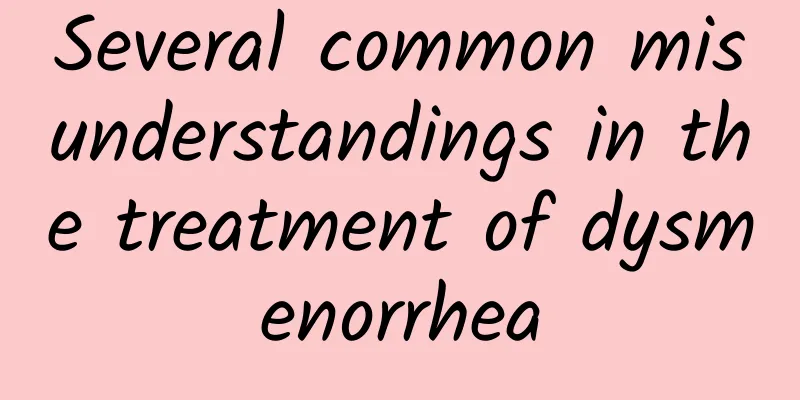What causes endometriosis?

|
The occurrence of endometriosis may be related to multiple causes, including genetic factors, environmental influences, physiological abnormalities, surgical trauma, and hormonal imbalance. Each factor may act alone or together to cause the occurrence of the disease. 1. Genetic factors: If a direct relative in the family, such as a mother or sister, has had endometriosis, the risk of a female individual suffering from the disease will be significantly increased. This indicates that the disease may have a certain genetic susceptibility. Some studies have found that genes related to endometriosis may affect the proliferation ability of the endometrium or its ability to adapt to external pressure. 2 Environmental factors: Long-term exposure to certain chemicals in the environment, such as dioxins and phthalates, may interfere with estrogen levels, leading to hormone imbalance and inducing endometriosis. Smoking and excessive intake of high-fat foods may also increase the risk. 3 Physiological abnormalities: An important pathological mechanism of endometriosis is retrograde menstruation, that is, during menstruation, part of the endometrial tissue flows back through the fallopian tubes into the abdominal cavity with the menstrual blood, and implants and grows in abnormal locations. Abnormal immune system may aggravate this process, making it impossible for the body to clear these ectopic tissues, thus forming lesions. 4 Surgical trauma: Cesarean section or other gynecological surgery may cause endometrial cells to be carried to the tissue outside the uterus, thus becoming lesions. For example, a history of intrauterine surgery in the past may cause endometrial cells to adhere to the incision area and form ectopic lesions. 5. Hormone imbalance and other diseases: Excessive estrogen levels can stimulate the excessive growth of endometrial tissue and may also lead to endometriosis. Other endocrine disorders such as polycystic ovary syndrome may also indirectly induce or aggravate the condition. For the prevention and treatment of endometriosis, first of all, regular gynecological examinations are required, especially for those with a family history or obvious symptoms. Reasonable arrangements should be made for life and diet, reducing the intake of high-fat and high-sugar foods, and avoiding contact with harmful chemicals. In terms of medication, estrogen-progesterone balancing drugs, contraceptives, etc. can be selected under the guidance of professional doctors to control the condition. For severe cases, laparoscopic surgery to remove the lesions or surgical treatment can be considered. It is very important to recognize and pay attention to endometriosis. If women show symptoms such as heavy menstrual flow, aggravated dysmenorrhea, unexplained infertility, etc., they should seek medical attention as soon as possible, and take scientific intervention measures after a clear diagnosis through ultrasound or laparoscopy to avoid worsening of the disease and affecting the quality of life. |
<<: What are the symptoms of left ovarian cyst?
>>: The harm of early uterine cysts
Recommend
Are you facing the contradiction that is hindering your weight loss? Is it possible to avoid sugary drinks? Dr. Ma Wenya helps you find your weight loss blind spots
Isn’t losing weight just about eating less and ex...
Is a 2.0 cm ovarian cyst serious?
Is a 2.0cm ovarian cyst serious? An ovarian cyst ...
Treatment principles for menopausal syndrome
What are the treatment principles for menopausal ...
I love eating white rice as my staple food, which makes me a sweet lover! Eating white rice in the morning may affect your health
While enjoying delicious food, you should also st...
How to treat pelvic inflammatory disease?
How to treat gynecological pelvic inflammatory di...
What is the best medicine for treating cervical erosion? These Chinese medicines can be used for cervical erosion
Cervical erosion is a relatively common gynecolog...
How to regulate irregular menstruation for women? Teach you dietary remedies to regulate irregular menstruation
Irregular menstruation is a problem for many fema...
What other tumors can grow in the uterus besides fibroids?
What other tumors can grow in the uterus besides ...
Reversing fatty liver disease - the focus is different for fat and thin people!
Do only fat people get fatty liver? This is a myt...
How to treat cervicitis
Cervicitis may be caused by a variety of factors,...
Precautions after chocolate cyst surgery
After the operation of ovarian chocolate cyst, it...
How to treat uterine effusion in early pregnancy? Is it physiological or pathological?
Early pregnancy uterine effusion can be divided i...
Patients with irregular menstruation should understand their care methods as early as possible
Irregular menstruation is a kind of female diseas...
Several dangers of bacterial vaginosis
Vaginal candidiasis brings certain troubles and h...
What harm does ectopic pregnancy have on the human body?
Many people still don't pay much attention to...









